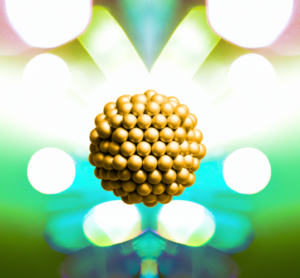Describing the electromagnetic properties of dense particulate media as homogeneous materials, especially those with nanoparticles that strongly interact with light is a notoriously difficult problem that lacks a satisfactory solution. This often hinders their use for applications in spite of fascinating properties. Using high-precision numerical calculations, a team of scientists from Bordeaux, Lyon and Poland have tackled this problem and found an effective medium description for dense spherical clusters of optically resonant gold nanoparticles. Such systems are important because they can be fabricated experimentally and exhibit remarkable light-matter interaction properties. Both the light scattered by the clusters and internal to the clusters can be accurately replicated by treating them as homogeneous spheres. Strikingly, the findings show that the problem is significantly simplified and reduced to three parameters that reveal the emergence of artificial optical magnetism, as well as longitudinal waves excited in the clusters. Both phenomena are in principle prohibited in naturally occurring materials at optical frequencies but are essential to accurately describe the behavior of the clusters. This study offers a practical solution to describe the electromagnetic response of densely packed granular systems made of resonant inclusions.
The implications of the work offer a new perspective on treating complex dense particulate media and constitute an important stepping-stone for the future design and understanding of artificial optical materials.

Article: R. Dwivedi, A. Aradian, V. Ponsinet, K. Vynck, & A. Baron. Effective-medium description of dense clusters of plasmonic nanoparticles with spatial dispersion. Physical Review A, 109, 023507 (2024).
